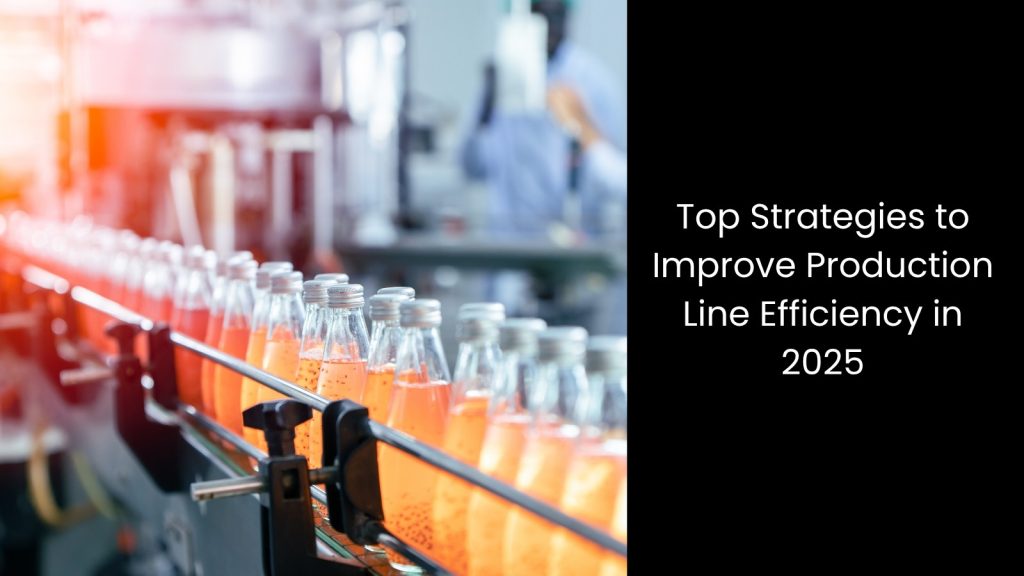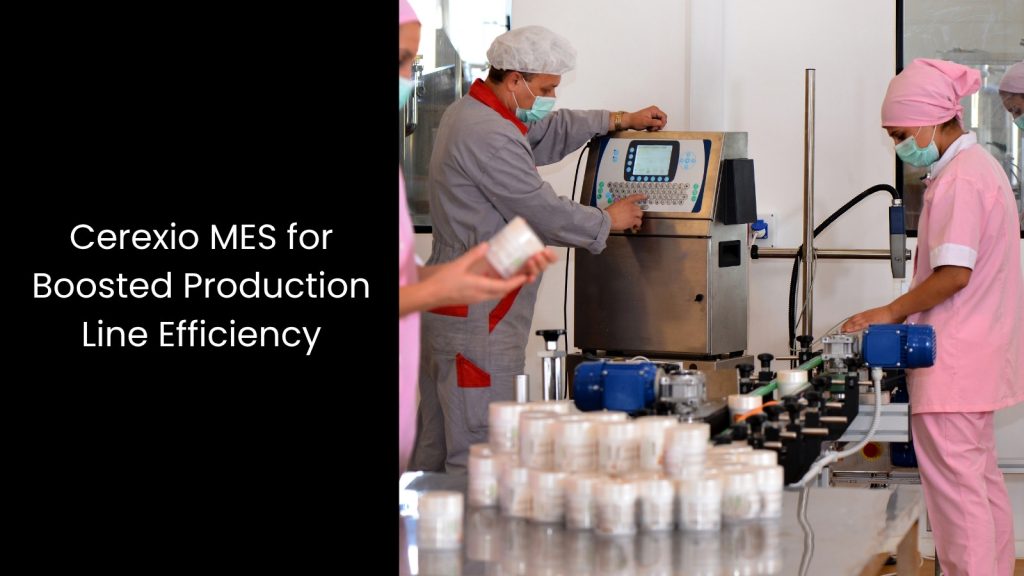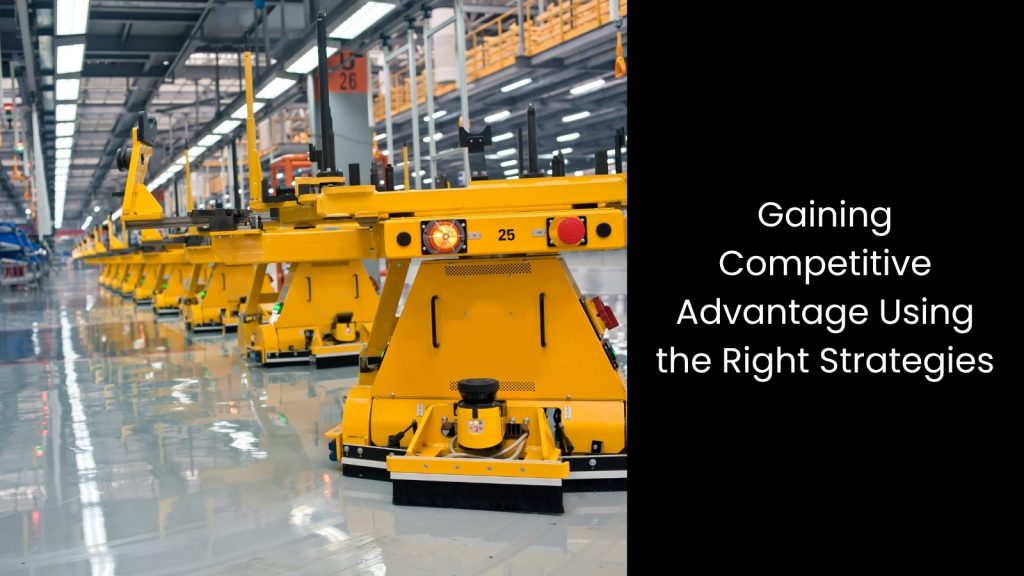As industries push towards greater productivity in 2025, improving production line efficiency has become a top priority for manufacturers worldwide. As we can see, advances in technology and evolving market demands are driving companies to adopt new strategies that streamline operations, reduce waste, and boost output. With those new techniques, businesses are transforming how they run their production lines.
This article explores the key strategies that manufacturers are using to enhance efficiency, stay competitive, and meet the challenges in the manufacturing domain.
We will look into
Did you know that asian manufacturers are losing $17 billion each year in the ASEAN region due to supply chain disruptions caused by global tensions and the pandemic? Forecasting indeed helps, but it alone does not prevent delays, rising costs, or sudden shocks. If they need to stay ahead, modern manufacturers need a smarter, combined approach that merges forecasting with technology and resilience planning.
This article reveals the game-changing strategies that are helping Asian businesses to flourish in the face of constant disruption.
Top Strategies to Improve Production Line Efficiency in 2025

Embracing Smart Manufacturing Technologies
Smart manufacturing technologies help factories work faster, safer, and smarter, especially in 2025 when the pressure to deliver more with less keeps growing.
When teams use Industrial IoT (IIoT), they watch machines speak through sensors that show live updates on performance, helping them spot issues before they turn into problems. Then there is automation and robotics, which handle repetitive tasks without getting tired or making human mistakes, keeping the production line running with fewer slowdowns.
Also, Artificial Intelligence (AI) steps in to make even sharper moves as it predicts when machines might break down and checks the quality of every item. This helps workers stay ahead of errors.
One of the most exciting tools, Digital Twin Technology, creates a virtual version of the factory floor, letting engineers test changes in a safe digital space before touching the real equipment.
So, together, these tools make everything smoother, quicker, and more cost-efficient.
Data-Driven Decision-Making
This turns into a must-have strategy for boosting production line efficiency because guessing just does not cut it anymore. Manufacturers now dig deep into data to spot exactly where things slow down; these weak spots, or bottlenecks, waste time and money if you do not catch them early.
That is where analytics steps in, helping managers connect the dots and find patterns that do not always show up at first glance. Then you have real-time dashboards like Power BI, which act like live control panels. These dashboards show key performance indicators (KPIs) that matter most, such as machine speed, output rates, or energy use.
So workers and supervisors can respond fast when something feels off. And to take it up a notch, machine learning uses smart algorithms that actually learn from past data. These systems adjust how resources move around and even predict when something might go wrong, keeping downtime low and productivity high.
Workforce Upskilling and Alignment
This strategy stands out as one of the smartest ways to boost production line efficiency, as machines cannot run well if people do not know how to use them. That is why they need to train on digital tools so they feel confident using smart technologies like dashboards, sensors, and robotics.
When workers understand how to work with these tools, they stop guessing and start solving problems faster. At the same time, factories cannot just tell people what to do; instead, they need to create a lean culture where every worker, especially the ones on the front line, shares ideas to improve daily tasks.
This teamwork mindset keeps things moving smoothly and cuts down on waste. Plus, with everyone using real-time communication tools, updates reach the right people without delay, making coordination way easier. When workers stay skilled, connected, and involved, production lines thrive and adapt when things change.
Lean Manufacturing and Process Optimisation
It helps companies fix what slows them down and build smoother, faster production lines.
First, teams use value stream mapping to look at every step in their workflow and figure out where time, effort, or materials go to waste. Once they see the problems clearly, they can cut out anything that does not add value.
Then, they move to the 5S methodology, which means keeping tools and workspaces clean, organised, and ready to go, as a messy station causes delays and confusion nobody wants. On top of that, factories use the Just-in-Time (JIT) system to only order and produce what they need, exactly when they need it.
This helps stop overproduction and saves space that unused materials would have taken up.
Sustainable Production Practices
We have stepped into an era where factories adopt sustainable production practices to boost production line efficiency and hit tighter climate targets. Let us explain how this functions.
Energy monitoring systems sit at the heart of this change because they track electricity, gas, and water flow in real time, then flash alerts when machines start to gulp more power than expected. So, technicians fix leaks or tune settings before bills stack up. Managers also set up recycling and reuse initiatives that turn scrap metal, packaging, and coolant into inputs rather than waste; these loops cut raw-material purchases, shrink landfill fees, and show a brand that cares about manufacturing sustainability.
To speed things up even more, governments and industry groups roll out green manufacturing incentives such as tax breaks, carbon credits, and low-interest loans, and factories grab them to install efficient motors, solar roofs, or closed-loop water systems without wrecking cash flow.
It is clear that each action supports the next: lower energy use trims operating costs, circular material flows keep supplies steady, and rewards create room for upgrades.
Agile Production Systems and Flexibility
This strategy helps factories stay quick on their feet when customer needs or supply chain issues suddenly shift.
Instead of locking into one routine, smart manufacturers now build lines that switch easily between products or order sizes without slowing down. Teams use modular equipment, which means they can rearrange machines or update settings fast when a new task shows up.
This setup keeps downtime low and lets businesses say yes to more custom orders or small batch runs.
At the same time, digital tools track what is happening on the floor, so planners can adjust in real time when something changes, like a late shipment or a design tweak. Workers also stay in the loop with clear communication platforms that update them instantly, which helps avoid confusion and mistakes.
Supply Chain Integration
In 2025, factories improve production line efficiency when they treat supply chains like connected teammates instead of separate parts.
Instead of waiting for delays or guessing when materials might arrive, businesses now use smart systems that link suppliers, manufacturers, and even delivery teams all in one real-time network. Everyone sees the same updates, so when one part of the chain shifts, the rest adjust quickly without slowing the line.
This kind of supply chain integration makes it easier to plan ahead, avoid stockouts, and keep machines running without stops. When teams track deliveries, inventory levels, and customer demand in one place, they reduce waste and make better calls faster. They do not overorder, they do not run out, and they do not sit around waiting for answers.
Cerexio MES for Boosted Production Line Efficiency

With Cerexio-powered MES software, factories can gain full control over production tasks, material use, and quality checks. Our system simply updates progress instantly, so teams avoid confusion and fix issues faster. This clear visibility helps streamline operations, reduce waste, and increase production line efficiency across every shift.
Gaining Competitive Advantage Using the Right Strategies

As you can see, choosing the right strategies transforms businesses from followers to leaders. When companies focus on one or a few of the above strategies and conduct time-to-time efficiency evaluations or audits, they could find where the gaps lie. With the right strategies, you could gain the competitive advantage in this fast-moving industrial world.
